Title: The Perkins INfrared Exosatellite Survey (PINES) II. Transit Candidates and Implications for Planet Occurrence around L and T Dwarfs
Authors: P. Tamburo, P. S. Muirhead, A. M. McCarthy, M. Hart, J. M. Vos, E. Agol, C. Theissen, D. Gracia, D. C. Bardalez Gagliuffi, J. Faherty
First Author’s Institutions: Department of Astronomy & The Institute for Astrophysical Research, Boston University, Boston, Massachusetts
Status: Accepted for publication in AJ, pre-print available on the arxiv
Today’s authors search for planets not around stars, but around brown dwarfs!
Not a Star, and Not a Planet
Brown dwarfs are mysterious cosmic objects.
Are they stars? They can fuse deuterium, and the largest ones can even fuse lithium! But they are not massive enough to fuse hydrogen into helium, so they are not classified as stars.
If they are not stars, are they planets? Again, no. They are self-luminous, unlike their less-massive, gas-giant counterparts.
Confusingly, brown dwarfs are not stars, and not planets, but their own class of celestial beings.
Not Stars, but Still Planet Hosts?
Historically, astronomers and the general public alike have viewed stars as the hosts of planets. In fact, one of the facets of the International Astronomical Union (IAU) definition of a planet is, “in orbit around the Sun” (check out these two astrobites to learn more about the IAU). We now know of many planets that orbit stars other than the Sun, but today’s authors go one step further: they have begun searching for planets that orbit brown dwarfs.
It has been shown that the occurrence rate of short-period, super-Earth-sized planets increases with decreasing stellar mass; M dwarfs host ~3 times as many of these planets as F dwarfs. This anti-correlation could continue beyond the Main Sequence and into the brown dwarf mass range. However, models have shown that the protoplanetary disks around brown dwarfs may not have enough material to form planets. Prior to today’s paper, only one planet around a brown dwarf was known. Today’s authors search for additional planets orbiting brown dwarfs to learn more about these fascinating systems.
In the PINES
Today’s authors obtained 131 brown dwarf light curves using the Mimir instrument on Boston University’s 1.8-meter Perkins Telescope Observatory. They then developed an algorithm to search for transiting planets in their light curves. They have designated their search “PINES” (Perkins INfrared Exosatellite Survey).
This search yielded two transit candidates. The first — 2MASS J18212815+1414010 — is a known irregular variable star, so it is unlikely that the signal they detected was from a transiting planet.
The second transit candidate, however, is more intriguing. The authors detected a potential super-Earth around 2MASS J08350622+1953050, with a radius as large as 5.8R_Earth if the host is young or as small as 4.2R_Earth if the host is old (Figure 1). Brown dwarfs contract considerably as they age and cool, so the estimate of the planet candidate’s radius is highly-dependent on age. The surface gravity of the 2MASS J08350622+1953050 indicates that it is more than 100 million years old, but could be as old as ten billion! The authors state that it is more likely 2MASS J08350622+1953050 is fully contracted, but they cannot rule out larger radii without placing firmer constraints on the target’s age.
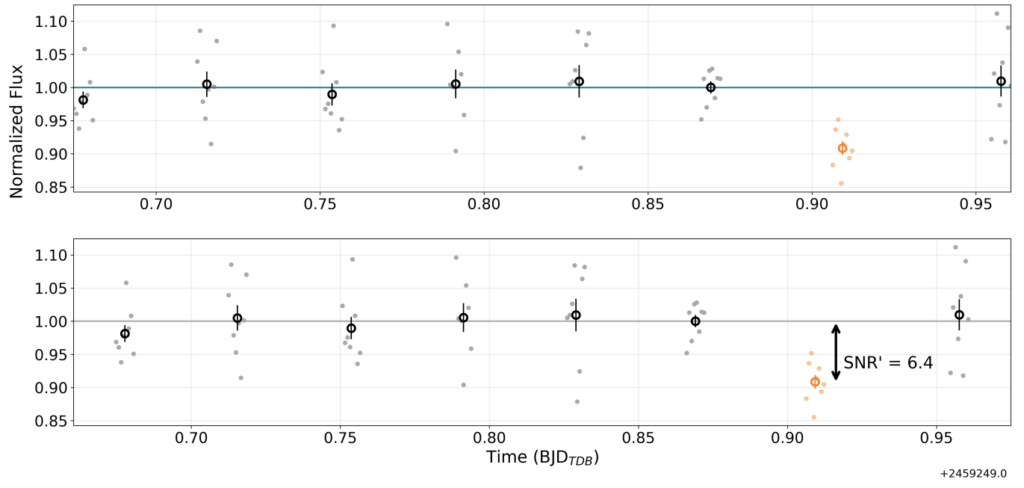
As demonstrated by this range in planetary radius, very little is known about 2MASS J08350622+1953050, so the authors had to carry out various tests to determine the nature of the signal. They ran diagnostic checks, investigated astrophysical false positives, took follow-up observations, and carried out Markov chain Monte Carlo simulations.
The authors also performed injection and recovery tests to estimate the likelihood of detecting a planet with a radius similar to the one estimated for 2MASS J08350622+1953050. Assuming that brown dwarfs host the same number of short-period planets as M dwarfs, they calculate a 1% chance of detecting a planet if the host is old, and a 0.13% chance of detecting a planet if the host is young. These results indicate that we are unlikely to detect a planet of this radius with these 131 brown dwarf light curves, unless brown dwarfs host more short-period planets than the more massive, stellar M dwarfs. This conclusion supports the anti-correlation between planet occurrence rates and stellar mass, which challenges current planet formation models and opens up the possibility of detecting additional worlds orbiting our brown dwarf neighbors.
More Brown Dwarf Planets to Come
The authors are continuing their search for planets around brown dwarfs. As they are searching for single transit events, the periods of these planets are unknown, and their transits cannot be predicted. This makes them unfavorable targets for oversubscribed space missions such as Hubble or JWST. However, ground-based surveys like PINES are perfect for finding these single-transit planets around not-quite-planets.
As the IAU definition of a planet would not consider objects that orbit brown dwarfs planetary, we must coin a new term for the bodies that orbit brown dwarfs. Do you have an opinion on what these objects should be named? Comment below!
Astrobite edited by Isabella Trierweiler
Featured image credit: NASA/JPL-Caltech

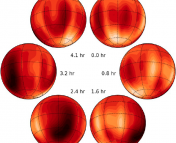
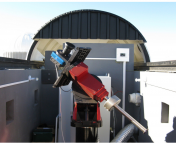
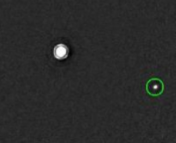
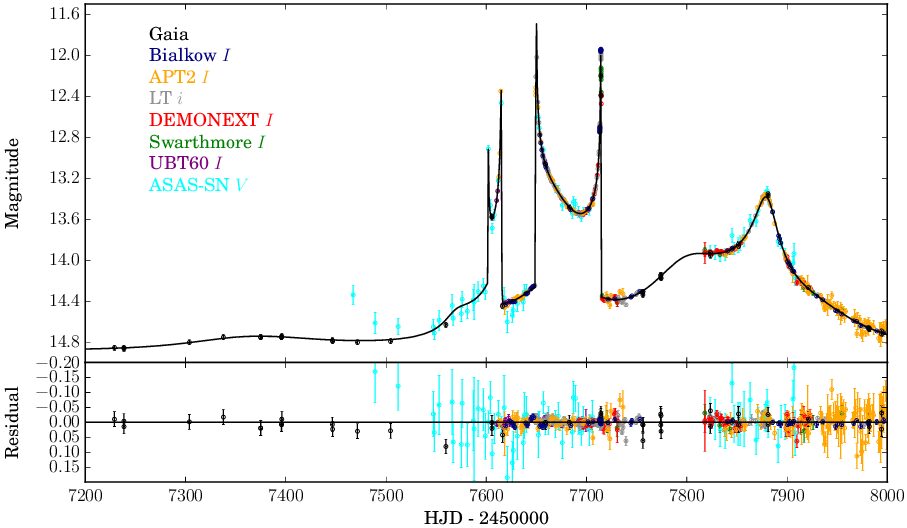
How about calling planets around BD as Bronte ?